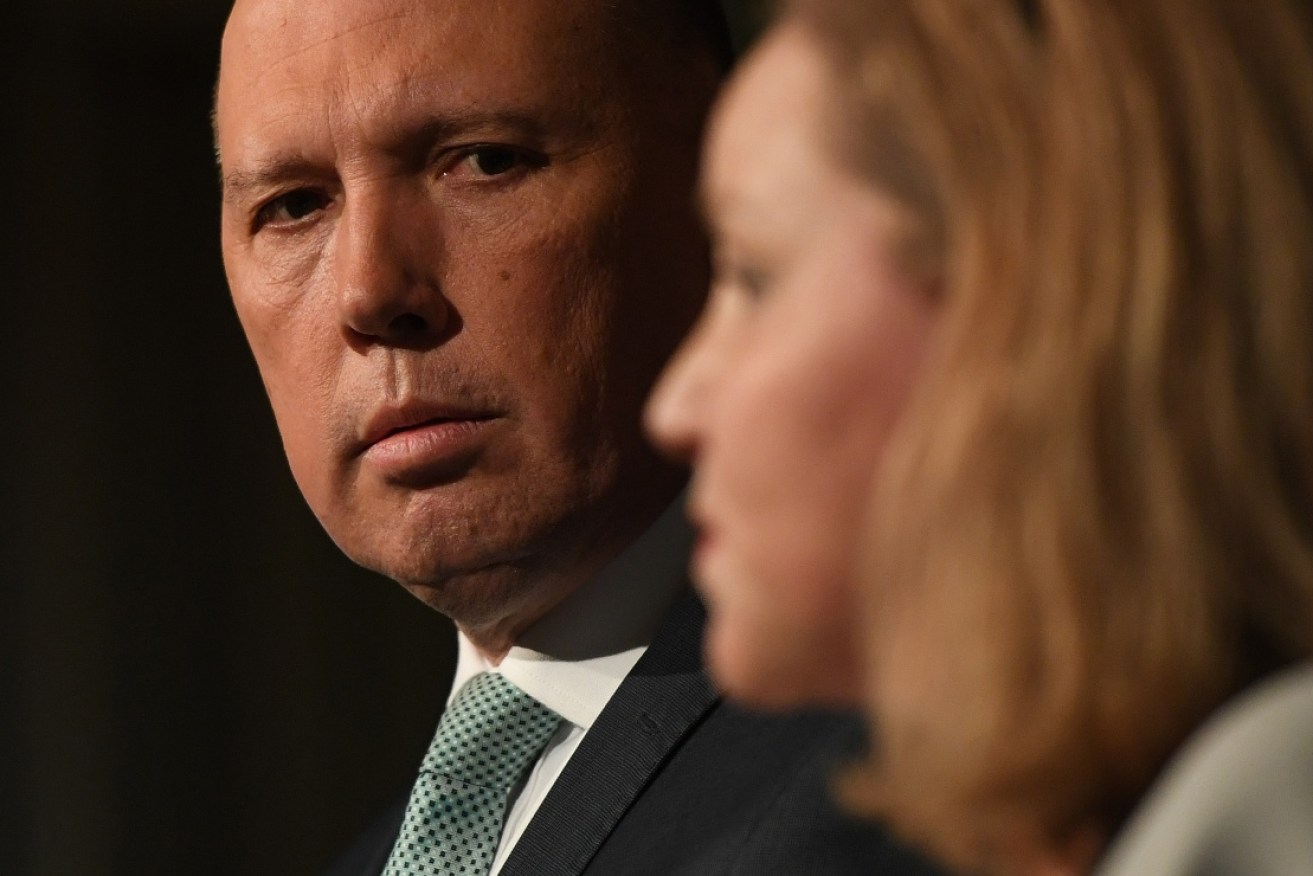Government fights quiet migration war while minimum-wage rise slips by


Home Affairs Minister Peter Dutton changed the migration 'target' to a 'ceiling'. Photo: AAP
Another first Tuesday, another Reserve Bank board meeting, another statement that the bank has its fingers crossed for some real wages growth although it can’t see any in the forecastable future.
Sometimes it’s what the RBA doesn’t say that’s important. Governor Philip Lowe devoted a third of his post-board statement to the entwined issues of consumption, inflation, employment, unemployment and wages growth, but of those 245 words, there wasn’t a single syllable about the biggest minimum-wage rise in eight years.
All Lowe said was: “Wages growth remains low. This is likely to continue for a while yet, although the stronger economy should see some lift in wages growth over time. Consistent with this, the rate of wages growth appears to have troughed and there are reports that some employers are finding it more difficult to hire workers with the necessary skills.”
Translated into English, the RBA thinks that maybe the wages growth rate isn’t getting any worse and at some point in the future, it will get better. (In RBA-ese, “over time” means “further away than we care to guess”.)
There’s a lot riding on wages rising faster – the RBA’s inflation target, never mind the Federal budget given Scott Morrison’s reliance on very brave wages forecasts – so you might think a 3.5 per cent increase that’s supposed to flow on to 2.3 million workers would be encouraging and at least worth a mention in passing. But no.
There’s a reason for that – there’s no point getting folks’ hopes up over nothing.
This time last year, the Fair Work Commission granted a 3.3 per cent minimum wage rise and it barely touched the economy’s sides. The wage index for the September quarter increased by 0.5 per cent – about the same as every quarter since June 2014. The private sector wage index is up only 1.9 per cent for the year to March.
If 3.3 per cent didn’t register, there’s precious little reason to think 3.5 per cent will either. Australia’s minimum wage will be 6.9 per cent higher next month than it was 13 months ago – and that has negligible impact on our overall wages story. (And it won’t help that penalty rates are being reduced from July 1 for many of those on the minimum wage.)
There are 12.5 million Australians currently employed, so it says plenty about what’s happening with the 10.2 million who don’t get this wage rise from the FWC.
As previously reported here, there’s a Catch 22: the RBA is looking to faster wages growth to generate higher inflation, but employers are using the inflation rate as their benchmark for overall wages growth.
And that’s without getting into the changes in the workforce’s composition, the rise of private contractors and that unemployment is forecast to remain stuck around 5.25 per cent for the next three years.
How can the Federal Government bet the budget on wages growth jumping to 2.75 per cent in the new financial year, 3.25 per cent the following year and 3.5 per cent forever after?
Part of the answer might be in the secret war the government is fighting on immigration, perhaps hoping that reducing the number of workers will bid up the price of their labour.
Two months ago, I reported the writing was on the wall that the government was quietly cutting about 20,000 places from its permanent visa scheme.
That has since been confirmed, in not so many words.
And there are other subtleties at play. A Parliamentary Library budget review migration report by Henry Sherrell noted that Minister Peter Dutton had changed the permanent migration program’s 190,000 “target” to a “ceiling”.
Aside from coming in about 20,000 below the “ceiling”, some 10,000 places are going to a new visa category for New Zealand citizens who are already in the country. The combined effect is to reduce our net overseas migration (NOM) by about 30,000.
But wait, there are fewer.
It appears the change in short-term visas and making it harder for foreign students to transition to permanent visas also is having an impact on NOM.
International student numbers were up by 12 per cent in March compared with March 2017 – the 534,189 international students counted by the Department of Education and Training represent our second-biggest services export industry.
But almost all the growth in international student visas went to people already in Australia – the number of visas issued to students outside of Australia was effectively flat.
It’s suggested this change could represent people swapping to student visas as other types of short-term visas become more difficult or impossible to obtain. In any event, it’s likely to put another dent in NOM.
A noticeable drop in NOM could allow the government to tell Pauline Hanson it is quietly doing what she wants – cutting migration.
If Scott Morrison also thinks it will help wages growth, he could be overlooking another Catch 22: migration is a key employment driver. Rather than bidding up wages by reducing the supply of workers, the policy could lower wages by reducing the demand for workers.
But maybe the government’s undercover NOM operation has nothing to do with brave wages growth assumption. Maybe it’s just that the Treasury’s forecasting is hopelessly incompetent.
It doesn’t instil confidence that in the budget at the start of May, Treasury forecast the wage price index would show 2.25 per cent growth for the current financial year. With three weeks to go, that’s not looking likely.








